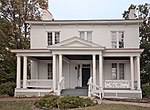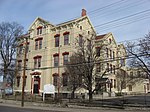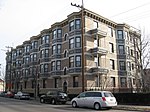Lane Seminary

Lane Seminary, sometimes called Cincinnati Lane Seminary, and later renamed Lane Theological Seminary, was a Presbyterian theological college that operated from 1829 to 1932 in Walnut Hills, Ohio, today a neighborhood in Cincinnati. Its campus was bounded by today's Gilbert, Yale, Park, and Chapel Streets.Its board intended it to be "a great central theological institution at Cincinnati — soon to become the great Andover or Princeton of the West." However, the founding and first years of Lane were difficult and contentious, culminating in a mass student exodus over the issue of slavery, or more specifically whether students were permitted to discuss the topic publicly, the first major academic freedom incident in America. There was strong pro-slavery sentiment in Cincinnati, and the trustees immediately prohibited further discussion of the topic, to avoid repercussions. With the city being on the border of the South, a lot of fugitive slaves and freedmen went through Cincinnati, including James Bradley, who would participate in the pivotal Lane slavery debates in the 1830s. Their competition for jobs had led to the anti-abolitionist Cincinnati riots of 1829 and would soon produce the Cincinnati riots of 1836.
Excerpt from the Wikipedia article Lane Seminary (License: CC BY-SA 3.0, Authors, Images).Lane Seminary
Gilbert Avenue, Cincinnati Walnut Hills
Geographical coordinates (GPS) Address Website Nearby Places Show on map
Geographical coordinates (GPS)
| Latitude | Longitude |
|---|---|
| N 39.130172222222 ° | E -84.488288888889 ° |
Address
Thomson McConnell Cadillac
Gilbert Avenue
45206 Cincinnati, Walnut Hills
Ohio, United States
Open on Google Maps







